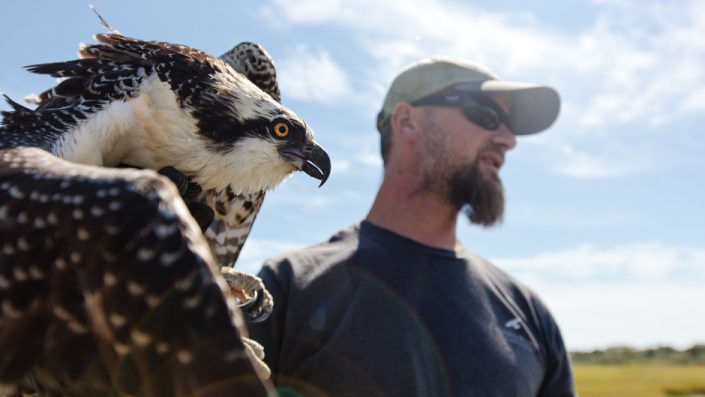The Fate of Chump: Osprey 78/D
Proof that life is never easy for young ospreys
by Ben Wurst, Habitat Program Manager

I thought long and hard about sharing this news, hence the delay in this post. In late October, we received news that a young osprey I banded this summer was re-sighted. It turns out that this bird was not your average young osprey, out of the 892 produced this year. This young bird hatched at a nest behind the Long Beach Island Foundation of the Arts & Sciences, around June 11th, a nest referred to as home to “LBI’s Most Famous Osprey Couple, Jack & Wendy.” He was banded, along with his nestlings, on July 5th. He was tagged with a red auxiliary “field readable” band: 78/D, as part of Project RedBand, which allows fellow biologists and citizen scientists the ability to identify the bird while still alive (most osprey band reports occur during mortality based events). At the time of banding, he was also given the name Chump, by Northside Jim.
A few weeks after being banded, a local resident reported a bird in distress (on the ground) at LBIF and I contacted Jim to see if he could respond. Long story short, he did and Chump was rehabbed within six weeks at Toms River Avian Care (on August 30th). After being released, we watched Chump make a strong flight around the marsh at LBIF until he flew off into the distance. We could only hope that he was strong enough to survive on his own, since he was too old for his parents to accept him back where he hatched. Continue reading “The Fate of Chump: Osprey 78/D”